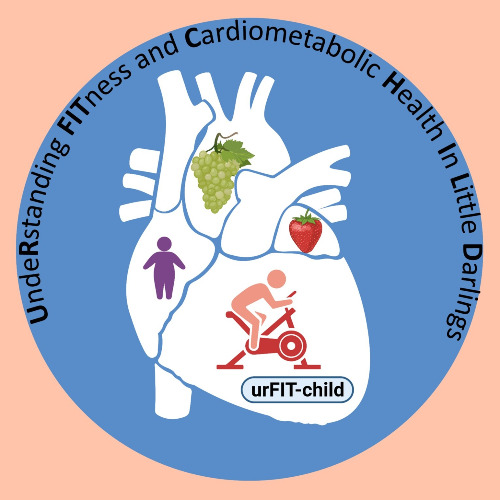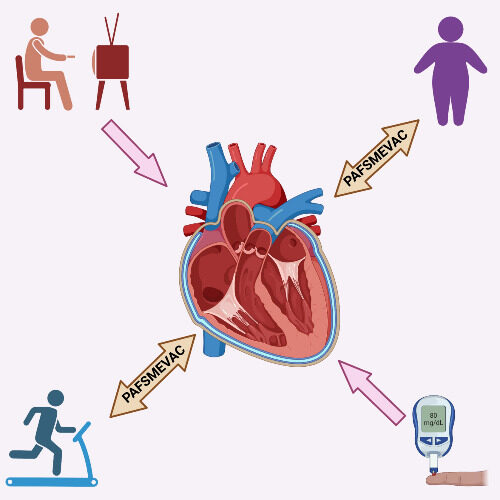
Physical Activity, Fitness, and Sedentariness with MEtabolic, VAscular, and Cardiac health in pediatric population (PAFSMEVAC)
Funders
Main funder

Other funders
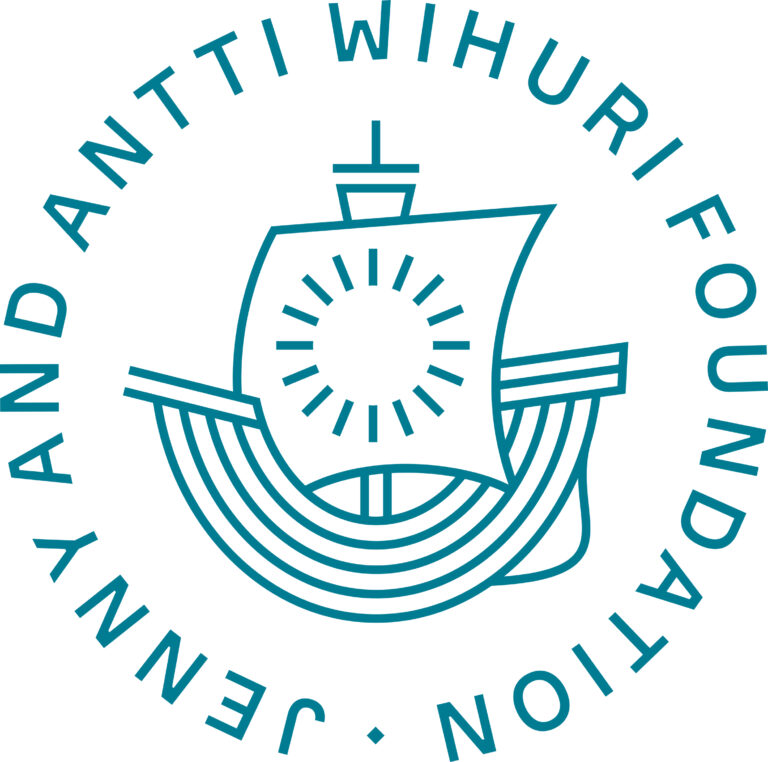

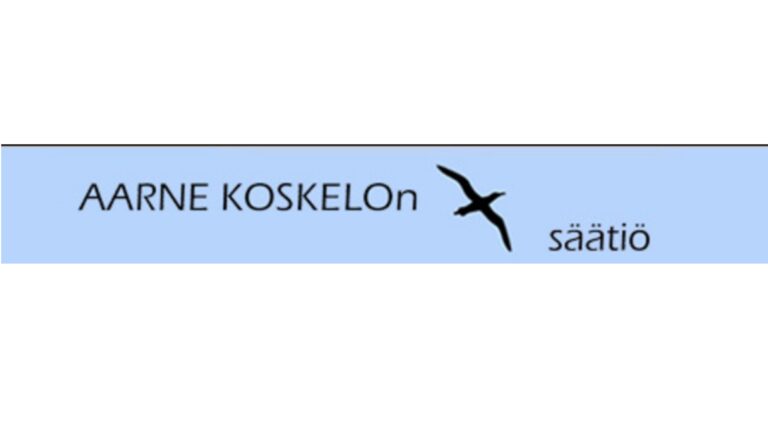
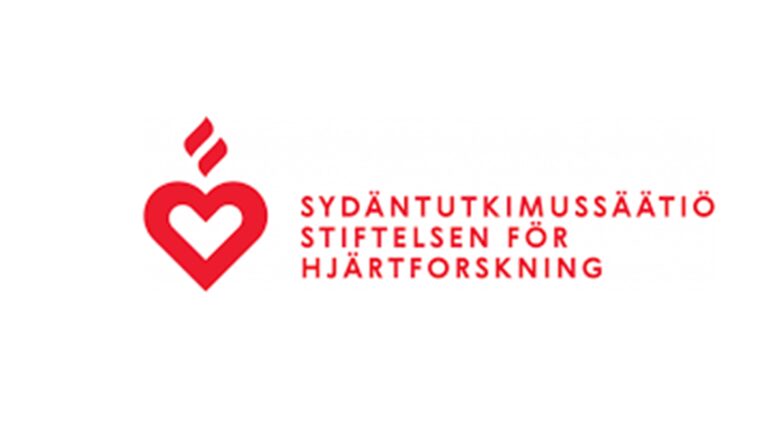



Leaders
Research group Website https://urfit-child.com
The PAFSMEVAC project aims to:
- Improve understanding of the development of cardiovascular, metabolic, and arterial diseases from childhood until young adulthood.
- Identify critical time period of significant deviation from physiology to pathology during growth and maturation.
- Simulate potential intervention effects in situation were randomized clinical trials are lacking in apparently healthy children and adolescents.
- Examine mechanistic cross-talk within modifiable risk factors and non-modifiable risk factors to inform potentially effective intervention strategies.
- Investigate causal inferences in risk factors relationships that prospectively influence cardiac, metabolic, and arterial health from childhood through young adulthood.
- Discover novel risk factors for several paediatric diseases such as hypertension, insulin resistance (type 2 diabetes), obesity, premature cardiac damage, atherosclerosis, dyslipidaemia in which several intervention strategies have had limited success.
- To fill knowledge gaps identified by the World Health Organization and other global public health agencies through the provision of substantial scientific evidence useful in updating health guidelines in primarily preventing non-communicable diseases.
Modifiable risk factors are total cholesterol, triglyceride, low-density lipoprotein cholesterol, high-density lipoprotein cholesterol, insulin resistance (glucose and insulin), blood pressure, heart rate, low-grade inflammation, obesity, body composition (fat mass and muscle mass), sedentary time, light physical activity, moderate-to-vigorous physical activity, smoking habit, cardiorespiratory fitness. Risk factors where measured during clinic visit from childhood starting at age 7 years and repeated either yearly or bi-annually until age 17 years. Young adulthood assessments occurred at age 24 years clinic visit, the 30-year clinic visit is currently ongoing (2022 – 2024).
The major study outcomes are: arterial stiffness (carotid-femoral pulse wave velocity), carotid intima-media thickness, carotid elasticity or distensibility, left ventricular concentric and eccentric hypertrophy, left ventricular diastolic function, left ventricular filling pressure, etc. These cardiac and vascular outcomes were measured both in adolescence (age 17 years) and young adulthood (age 24 years).
Data and Population Size:
Data for urFIT-child research project are drawn from the Avon Longitudinal Study of Parents and Children (ALSPAC), also known as Children of the 90s, a world-leading UK ongoing birth cohort study. More than 14,000 pregnant women were recruited from April 1991 through December 1992 and 14,901 foetuses arising from the pregnancy, and their partners have been followed up intensively over three decades. The ALSPAC study website contains details of all the data that are available (http://www.bristol.ac.uk/alspac/researchers/our-data/).
Population who attended specific clinic visits:
Clinic visit Population sample size
@Age 7 years: 8 290
@Age 8 years: 7 488
@Age 9 years: 7 722
@Age 10+ years: 7 557
@Age 11+ years: 7 153
@Age 12+ years: 6 832
@Age 13+ years: 6 147
@Age 15+ years: 5 515
@Age 17+ years: 5 081
@Age 24+ years: 4 026
@Age 30+ years: ongoing
Impact:
To disseminate findings in high impact and leading scientific journals in addition to providing simple texts (press release) understandable to the general population and tax payers who have funded the research. This evidence would be helpful in updating public health recommendation from childhood to enable a healthier life course.
News
-
 BMI outdated for measuring childhood obesity
BMI outdated for measuring childhood obesityBMI outdated for measuring childhood obesity
Changing how children are measured for obesity to a new system could be more accurate, a study has concluded. It revealed the traditional method of… -
 How to reverse the damage your kid’s sedentary time has done to their heart
How to reverse the damage your kid’s sedentary time has done to their heartHow to reverse the damage your kid’s sedentary time has done to their heart
The time kids spend being sedentary may be correlated with an increase in the mass of the heart’s left ventricle — particularly in girls,… -
 Stiff Arteries May Cause Metabolic Syndrome
Stiff Arteries May Cause Metabolic SyndromeStiff Arteries May Cause Metabolic Syndrome
It seems metabolic syndrome has a new risk factor we haven't thought about. New research published in the American Journal of Physiology found that… -
 Get the Benefits of Exercise Without Breaking a Sweat
Get the Benefits of Exercise Without Breaking a SweatGet the Benefits of Exercise Without Breaking a Sweat
For as long as we’ve had official recommendations for exercise, those recommendations have focused on effort. Do at least 150 minutes a week of…
Cooperation
-

-
The urFIT-child project research proposals are listed below but not limited to:
Cardiorespiratory fitness, adiposity and lean mass in relation to arterial structure and function from childhood to adulthood
https://proposals.epi.bristol.ac.uk/?q=node/130051
Associations between sedentary time and physical activity with arterial function and structure from childhood to adulthood
https://proposals.epi.bristol.ac.uk/?q=node/130208
Associations of cardiorespiratory fitness, body composition, physical activity and sedentary time with cardiometabolic risks
https://proposals.epi.bristol.ac.uk/?q=node/130309
Youth Vascular Consortium
https://proposals.epi.bristol.ac.uk/?q=node/130322
Association of inflammation with cardiac structure in adolescents
-
Corsi DR, Agbaje AO. Impact of smoking from childhood associated with greater risk of cardiac damage. Trends Cardiovasc Med. 2025 Oct 11:S1050-1738(25)00136-7. doi: 10.1016/j.tcm.2025.10.002. Epub ahead of print. PMID: 41083133.
Agbaje AO. Response to Comment on Agbaje et al. Persistent Hyperglycemia and Insulin Resistance With the Risk of Worsening Cardiac Damage in Adolescents: A 7-Year Longitudinal Study of the ALSPAC Birth Cohort. Diabetes Care 2025;48:896-904. Diabetes Care. 2025 Nov 1;48(11):e169-e170. doi: 10.2337/dci25-0105.
Corsi DR, Agbaje AO. Family history of hypertension, diabetes, and high cholesterol with the risk of worsening structural and functional cardiac damage in youth: a 24-year longitudinal study. European Heart Journal, 2025 Nov;46,Supplement_1:ehaf784.4043. https://doi.org/10.1093/eurheartj/ehaf784.4043
Corsi DR, Agbaje AO. Middle-class maternal socioeconomic status in pregnancy protects against the risk of worsening cardiac damage in youth: a 24-Year Longitudinal Study. European Heart Journal, 2025 Nov;46,Supplement_1:ehaf784.4578. https://doi.org/10.1093/eurheartj/ehaf784.4578
Corsi DR, Agbaje AO. New pediatric waist-to-height ratio adiposity cutoff predicts adulthood hypertension: analysis of 7243 participants from NHANES 2021-2023. European Heart Journal, 2025 Nov;46,Supplement_1:ehaf784.3758. https://doi.org/10.1093/eurheartj/ehaf784.3758
Corsi DR, Agbaje AO. Agbaje’s Waist-to-Height Ratio Estimated Fat Mass Pediatric Cutoff Predicts Elevated Blood Pressure Risk in Multi-racial US Children and Adolescents. Circulation. 2025 Nov 4;152:(3),4365110. https://doi.org/10.1161/circ.152.suppl_3.4365110
Baumgartner L, Weberruß H, Schulz T, Oberhoffer-Fritz RM, Agbaje AO. Longitudinal association of peak oxygen uptake with vascular and cardiac structure and function in German pediatric athletes. Am J Physiol Heart Circ Physiol. 2025 Oct 1;329(4):H959-H968. doi: 10.1152/ajpheart.00570.2025.
Agbaje AO, Zachariah JP, Barker AR, Williams CA, Vlachopoulos D, Saner C, Tuomainen TP. Persistent Hyperglycemia and Insulin Resistance With the Risk of Worsening Cardiac Damage in Adolescents: A 7-Year Longitudinal Study of the ALSPAC Birth Cohort. Diabetes Care. 2025 Jun 1;48(6):896-904. doi: 10.2337/dc24-2459.
Agbaje AO. Novel Pediatric Waist-to-height Ratio Fat Mass Cutoff Predicts Liver Steatosis and Fibrosis Better than Body Mass Index: The NHANES. J Endocr Soc. 2025 May 3;9(7):bvaf079. doi: 10.1210/jendso/bvaf079.
Sansum KM, Bond B, Pulsford RM, McManus A, Agbaje AO, Skinner AM, Barker AR. Cross-sectional associations between physical activity and sedentary time with cardiovascular health in children from the ALSPAC study using compositional data analysis. Scientific Reports. 2025 Apr 7;15(1):11878. doi: 10.1038/s41598-025-95407-x.
Agbaje AO. BMI triples overweight prevalence in 7600 children compared with waist-to-height ratio: The ALSPAC Study. Obesity and Endocrinology 2025:1(1);wjaf002. https://doi.org/10.1093/obendo/wjaf002
Agbaje AO. Accelerometer-based sedentary time and physical activity with incident and progressive tobacco smoking in 2503 children: A 13-year mediation and temporal longitudinal study. Behav Res Ther. 2025 Feb 1;185:104674. doi: 10.1016/j.brat.2024.104674.
Agbaje AO. Incidental and Progressive Tobacco Smoking in Childhood and Subsequent Risk of Premature Cardiac Damage. J Am Coll Cardiol. 2025 Feb, 85 (5) 546–549. doi: 10.1016/j.jacc.2024.09.1229.
-
Agbaje AO. Lean Mass Longitudinally Confounds Sedentary Time and Physical Activity With Blood Pressure Progression in 2513 Children. J Cachexia Sarcopenia Muscle. 2024 Nov 13. https://doi.org/10.1002/jcsm.13639. Epub ahead of print. PMID: 39535381.
Agbaje AO. JHH Young Investigator Award 2023: interview with the winner Andrew O. Agbaje. J Hum Hypertens. 2024 November;38:733–735. https://doi.org/10.1038/s41371-024-00974-7
Agbaje AO. Fat mass mediating effect on the association of worsening insulin resistance with increased left ventricular mass in 1595 adolescents: a 7-Year Longitudinal and Mediation Study. Eur Heart J, 2024 Oct;45,Supplement_1:ehae666.2898. https://doi.org/10.1093/eurheartj/ehae666.2898
Agbaje AO. Waist-circumference-to-height-ratio had better longitudinal agreement with DEXA-measured fat mass than BMI in 7237 children. Pediatr Res. 2024 Oct;96(5):1369-1380. https://doi.org/10.1038/s41390-024-03112-8.
Agbaje AO. Accelerometer-based sedentary time and physical activity from childhood through young adulthood with progressive cardiac changes: a 13-year longitudinal study. Eur J Prev Cardiol. 2024 Sep 6;31(12):1480-1492. https://doi.org/10.1093/eurjpc/zwae129
Agbaje AO. Author reply to correspondence from Hudda et al. on waist-circumference-to-height-ratio had better longitudinal agreement with DEXA-measured fat mass than BMI in 7237 children. Pediatr Res. 2024 Aug;96(3):538-539. https://doi.org/10.1038/s41390-024-03316-y
Agbaje AO, Saner C, Zhang J, Henderson M, Tuomainen TP. DXA-based Fat Mass With Risk of Worsening Insulin Resistance in Adolescents: A 9-Year Temporal and Mediation Study. J Clin Endocrinol Metab. 2024 Aug 13;109(9):e1708-e1719. https://doi.org/10.1210/clinem/dgae004
Agbaje AO. Associations of Sedentary Time and Physical Activity From Childhood With Lipids: A 13-Year Mediation and Temporal Study. J Clin Endocrinol Metab. 2024 Jun 17;109(7):e1494-e1505. https://doi.org/10.1210/clinem/dgad688
Agbaje AO. Accelerometer-based sedentary time and physical activity with MASLD and liver cirrhosis in 2684 British adolescents. npj Gut & Liver 2024 Jun 1;1. https://doi.org/10.1038/s44355-024-00002-y
A O Agbaje, Increased low-density lipoprotein cholesterol predict the risk of progressive structural but not functional cardiac damage in youth: a 7-year follow-up study. Eur J Prev Cardiol. 2024 Jun 1;31,Issue Supplement_1: zwae175.366, https://doi.org/10.1093/eurjpc/zwae175.366
A O Agbaje, No association between increased high-density lipoprotein cholesterol and progressive cardiac damage in 1595 adolescents: a 7-year longitudinal study. Eur J Prev Cardiol. 2024 Jun 1;31, Issue Supplement_1:zwae175.365, https://doi.org/10.1093/eurjpc/zwae175.365
Zachariah JP, Jone PN, Agbaje AO, Ryan HH, Trasande L, Perng W, Farzan SF; American Heart Association Council on Lifelong Congenital Heart Disease and Heart Health in the Young; Council on Cardiovascular and Stroke Nursing; Council on Epidemiology and Prevention; Council on Lifestyle and Cardiometabolic Health; and Council on Clinical Cardiology. Environmental Exposures and Pediatric Cardiology: A Scientific Statement From the American Heart Association. Circulation. 2024 May 14;149(20):e1165-e1175. doi: 10.1161/CIR.0000000000001234.
Agbaje AO, Barker AR, Lewandowski AJ, Leeson P, Tuomainen TP. Accelerometer-based sedentary time, light physical activity, and moderate-to-vigorous physical activity from childhood with arterial stiffness and carotid IMT progression: A 13-year longitudinal study of 1339 children. Acta Physiol (Oxf). 2024 May;240(5):e14132. https://doi.org/10.1111/apha.14132
Agbaje AO. Mediating effect of fat mass, lean mass, blood pressure and insulin resistance on the associations of accelerometer-based sedentary time and physical activity with arterial stiffness, carotid IMT and carotid elasticity in 1574 adolescents. J Hum Hypertens. 2024 May;38:393–403. https://doi.org/10.1038/s41371-024-00905-6
Agbaje AO. The Interactive Effects of Sedentary Time, Physical Activity, and Fat Mass on Insulin Resistance in the Young Population. J Clin Endocrinol Metab. 2024 Mar 5:dgae135. https://doi.org/10.1210/clinem/dgae135. Epub ahead of print. PMID: 38441224.
Agbaje AO. Increasing lipids with risk of worsening cardiac damage in 1595 adolescents: A 7-year longitudinal and mediation study. Atherosclerosis. 2024 Feb 1:389;117440. https://doi.org/10.1016/j.atherosclerosis.2023.117440
-
Agbaje AO, Perng W, Tuomainen TP. Effects of accelerometer-based sedentary time and physical activity on DEXA-measured fat mass in 6059 children. Nature Communications. 2023 Dec 12;14(1):8232. https://doi.org/10.1038/s41467-023-43316-w
Agbaje AO. Associations of Sedentary Time and Physical Activity From Childhood With Lipids: A 13-Year Mediation and Temporal Study. J Clin Endocrinol Metab. 2023 Dec 14:dgad688. https://doi.org/10.1210/clinem/dgad688 Epub ahead of print. PMID: 38097375.
A O Agbaje, A R Barker, A J Lewandowski, P Leeson, T P Tuomainen. Cumulative accelerometer-based sedentary time from childhood through young adulthood with increased arterial stiffness and carotid intima-media thickness in youth: a 13-year longitudinal study. European Heart Journal 2023 Nov 2;44(Supplement_2):ehad655.2077. https://doi.org/10.1093/eurheartj/ehad655.2077
A O Agbaje, A R Barker, A J Lewandowski, P Leeson, T P Tomi-Pekka. Cumulative accelerometer-based light physical activity from childhood through young adulthood with arterial stiffness and carotid intima-media thickness progression: a 13-year longitudinal study. European Heart Journal 2023 Nov 2;44(Supplement_2):ehad655.2338. https://doi.org/10.1093/eurheartj/ehad655.2338
A O Agbaje. Cumulative accelerometer-based sedentary time from childhood through young adulthood with progressive left ventricular remodelling in British youth: a 13-year longitudinal study. European Heart Journal 2023 Nov 2;44(Supplement_2):ehad655.2393. https://doi.org/10.1093/eurheartj/ehad655.2393
A O Agbaje. Prospective associations of non-HDL cholesterol with premature structural and functional cardiac damage progression in British youth: the ALSPAC study. European Heart Journal 2023 Nov 2;44(Supplement_2):ehad655.3017. https://doi.org/10.1093/eurheartj/ehad655.3017
A O Agbaje. Cumulative accelerometer-based light physical activity from childhood through young adulthood progressively decreases left ventricular mass in British youth: a 13-year longitudinal study. European Heart Journal 2023 Nov 2;44(Supplement_2):ehad655.1139. https://doi.org/10.1093/eurheartj/ehad655.1139
A O Agbaje. Increased triglyceride independently associates with premature structural and functional cardiac damage progression in asymptomatic adolescents: a 7-year longitudinal study. European Heart Journal 2023 Nov 2;44(Supplement_2):ehad655.2502. https://doi.org/10.1093/eurheartj/ehad655.2502
A O Agbaje. A 7-year longitudinal association of total cholesterol with premature structural and functional cardiac damage progression in youth: the ALSPAC birth cohort study. European Heart Journal 2023 Nov 2;44(Supplement_2):ehad655.1138. https://doi.org/10.1093/eurheartj/ehad655.1138
A O Agbaje. An average of 60mins/day of moderate to vigorous physical activity from childhood through young adulthood was associated with worsening cardiac structural damage in youth: A 13-year longitudinal study. European Heart Journal 2023 Nov 2;44(Supplement_2):ehad655.2602. https://doi.org/10.1093/eurheartj/ehad655.2602
A O Agbaje. Longitudinal Associations of Accelerometer-Based Sedentary Time and Physical Activity With Blood Pressure Progression From Childhood Through Young Adulthood: A 13-year Mediation and Isotemporal Substitution Study of 2513 Children. Circulation. 2023 Nov 6;148:A16549. https://www.ahajournals.org/doi/10.1161/circ.148.suppl_1.16549
Agbaje AO, Zachariah JP, Tuomainen TP. Arterial Stiffness but not Carotid Intima-Media Thickness Progression Precede Premature Structural and Functional Cardiac Damage in Youth: A 7-Year Temporal and Mediation Longitudinal Study. Atherosclerosis 2023 Sep;380:117197. https://doi.org/10.1016/j.atherosclerosis.2023.117197
Agbaje AO. Associations of accelerometer-based sedentary time, light physical activity and moderate-to-vigorous physical activity with resting cardiac structure and function in adolescents according to sex, fat mass, lean mass, BMI, and hypertensive status. Scand J Med Sci Sports. 2023 Aug;33(8):1399-1411. doi: 10.1111/sms.14365.
Agbaje AO. Adolescents Cholesterol Passport: A Universal Pediatric Lipid Screening Tool to Combat Atherosclerosis – the World’s Deadliest Scourge. Front Pediatr. 2023 June 19;11. doi: 10.3389/fped.2023.1228483
Agbaje AO. Longitudinal Mediating effect of Fatmass and Lipids on Sedentary Time, Light PA, and MVPA with Inflammation in Youth. J Clin Endocrinol Metab. 2023 Jun 13:dgad354. doi: 10.1210/clinem/dgad354. Epub ahead of print. PMID: 37310686.
Agbaje AO. Arterial stiffness preceding metabolic syndrome in 3,862 adolescents: a mediation and temporal causal longitudinal birth cohort study. Am J Physiol Heart Circ Physiol. 2023 Jun 1;324(6):H905-H911. doi: 10.1152/ajpheart.00126.2023.
Agbaje AO. Does arterial stiffness mediate or suppress the associations of blood pressure with cardiac structure and function in adolescents?. Am J Physiol Heart Circ Physiol. June 1 2023;324(6):H776-H781. doi: 10.1152/ajpheart.00094.2023.
Agbaje AO. Longitudinal Left Ventricular Mass Indexing for DEXA-Measured Lean Mass and Fat Mass: Novel Normative Reference Centiles in Post-Pubertal Adolescents and Young Adults. American Journal of Physiology-Heart and Circulatory Physiology 2023, Apr 1;324(4):H571-H577. https://doi.org/10.1152/ajpheart.00045.2023
Agbaje AO, Barker AR, Tuomainen TP. Cumulative muscle mass and blood pressure but not fat mass drives arterial stiffness and carotid intima-media thickness progression in the young population and is unrelated to vascular organ damage. Hypertension Research April 1 2023;46:984–999. doi: 10.1038/s41440-022-01065-1.
Agbaje AO. Elevated Blood Pressure and Worsening Cardiac Damage During Adolescence. The Journal of Pediatrics. 2023 Mar 3:S0022-3476(23)00132-4. doi: 10.1016/j.jpeds.2023.02.018.
Agbaje AO, Zachariah JP, Bamsa O, Odili AN, and Tuomainen T-P. Cumulative insulin resistance and hyperglycaemia with arterial stiffness and carotid IMT progression in 1779 adolescents: A 9-Year Longitudinal Cohort Study. American Journal of Physiology-Endocrinology and Metabolism 2023 Mar 1;324(3):E268-E278. https://doi.org/10.1152/ajpendo.00008.2023
Agbaje AO, Barmi S, Sansum KM, Baynard T, Barker AR, and Tuomainen T-P. Temporal longitudinal associations of carotid-femoral pulse wave velocity and carotid intima-media thickness with resting heart rate and inflammation in youth. Journal of Applied Physiology 2023 Mar 1;134(3):657-666. https://doi.org/10.1152/japplphysiol.00701.2022
Agbaje AO, Lloyd-Jones DM, Magnussen CG, Tuomainen T-P. Cumulative Dyslipidemia with Arterial Stiffness and Carotid IMT Progression in Asymptomatic Adolescents: A Simulated Intervention Longitudinal Study Using Temporal Inverse Allocation Model. Atherosclerosis Jan 1 2023;364:39-48. https://doi.org/10.1016/j.atherosclerosis.2022.11.011
-
Agbaje AO. Cardiorespiratory Fitness in Adolescence: A Telescope into Future Cardiovascular Health. Eur J Prev Cardiol. 2022 Dec 13:zwac298. doi: 10.1093/eurjpc/zwac298.
Andrew O Agbaje, Justin P Zachariah, and Tomi-Pekka Tuomainen. Arterial Stiffness and Carotid Intima-Media Thickness Progression Preceding Worsening Left Ventricular Hypertrophy and Diastolic Dysfunction in Youth: A Temporal Causal Longitudinal Study. Circulation 2022, Oct 30. doi/10.1161/circ.146.suppl_1.13679
Agbaje AO. To prevent hypertension in Africans: do we need to eat more vegetables? Eur J Prev Cardiol. 2022 Oct 10:zwac233. doi: 10.1093/eurjpc/zwac233.
A O Agbaje, D M Lloyd-Jones, C G Magnussen, T P Tuomainen. Cumulative dyslipidaemia from mid-adolescence through young adulthood with carotid intima-media thickness progression: a 9-year longitudinal study. European Heart Journal, 2022 Oct 2:43(Supplement_2,); ehac544.2350, https://doi.org/10.1093/eurheartj/ehac544.2350
A O Agbaje, S Barmi, K M Sansum, T Baynard, A R Barker, T P Tuomainen. Does arterial stiffness progression temporally precede higher low-grade inflammation in adolescents? Causal longitudinal evidence using auto-regressive cross-lagged structural equation models. European Heart Journal, 2022 Oct 2:43(Supplement_2,);ehac544.2247. https://doi.org/10.1093/eurheartj/ehac544.2247
A O Agbaje, D M Lloyd-Jones, C G Magnussen, T P Tuomainen. Simulated intervention and optimal timing for attenuating dyslipidaemia-related atherosclerotic progression in the young: a temporal inverse allocation analysis of the ALSPAC cohort. European Heart Journal, 2022 Oct 2:43(Supplement_2,); ehac544.2352, https://doi.org/10.1093/eurheartj/ehac544.2352
A O Agbaje, S Barmi, K M Sansum, T Baynard, A R Barker, T P Tuomainen. Temporal causal longitudinal associations of high-sensitivity C-reactive protein with carotid intima-media thickness progression in adolescents: the ALSPAC birth cohort study. European Heart Journal, 2022 Oct 2:43(Supplement_2,); ehac544.2246, https://doi.org/10.1093/eurheartj/ehac544.2246
A O Agbaje, J P Zachariah, O Bamsa, A N Odili, T P Tuomainen. Cumulative hyperinsulinemia, hyperglycaemia, and insulin resistance from mid-adolescence through young adulthood with carotid intima-media thickness progression: a 9-year longitudinal study. European Heart Journal, 2022 Oct 2:43(Supplement_2,);ehac544.2414, https://doi.org/10.1093/eurheartj/ehac544.2414
A O Agbaje, D M Lloyd-Jones, C G Magnussen, T P Tuomainen. Longitudinal associations of cumulative dyslipidaemia from mid-adolescence through young adulthood with arterial stiffness progression: the ALSPAC study. European Heart Journal, 2022 Oct 2:43(Supplement_2,);ehac544.2351, https://doi.org/10.1093/eurheartj/ehac544.2351
Agbaje AO. Mediating role of body composition and insulin resistance on the association of arterial stiffness with blood pressure among adolescents: The ALSPAC study. Front. Cardiovasc. Med. 2022: 9:939125. doi: 10.3389/fcvm.2022.939125
Agbaje AO. Arterial stiffness precedes hypertension and metabolic risks in youth: a review. J Hypertens. 2022 Oct 1;40(10):1887-1896. . doi: 10.1097/HJH.0000000000003239.
Agbaje AO, Barker AR, Mitchell GF, Tuomainen TP. Effect of Arterial Stiffness and Carotid Intima-Media Thickness Progression on the Risk of Dysglycemia, Insulin Resistance, and Dyslipidemia: a Temporal Causal Longitudinal Study. Hypertension. 2022 Mar;79(3):667-678. doi: 10.1161/HYPERTENSIONAHA.121.18754.
Agbaje AO, Barker AR, Tuomainen TP. Effects of Arterial Stiffness and Carotid Intima-Media Thickness Progression on the Risk of Overweight/Obesity and Elevated Blood Pressure/Hypertension: a Cross-Lagged Cohort Study. Hypertension. 2022 Jan;79(1):159-169. doi: 10.1161/HYPERTENSIONAHA.121.18449.
Agbaje AO, Barker AR, Tuomainen TP. Cardiorespiratory Fitness, Fat Mass, and Cardiometabolic Health with Endothelial Function, Arterial Elasticity, and Stiffness. Med Sci Sports Exerc. 2022 Jan 1;54(1):141-152. doi: 10.1249/MSS.0000000000002757.
-

Central Finnish Cultural Foundation
Jenny and Antti Wihuri Foundation
The North Savo regional Finnish Cultural Foundation
Orion Research Foundation sr
Aarne Koskelo Foundation
Antti and Tyyne Soininen Foundation
Paulo Foundation
Paavo Nurmi Foundation
Yrjö Jahnsson Foundation
Finnish Foundation for Cardiovascular Research
Pediatric Research Foundation
Ida Montin Foundation
Eino Räsänen Fund
Matti and Vappu Maukonen Fund
Alfred Kordelin Foundation
European Association for the Study of Obesity – Novo Nordisk Foundation
-
ENDO 2024 Press Conference on Sedentary time and liver damage in children 01.06.24
European Congress on Obesity 2024 EASO Pre-conference Interview 11.05.2024
CTV Largest Private Canadian TV Network News on Sedentariness and Heart Damage 07.05.2024
American Heart Association Scientific Statement on Environmental Exposure and Pediatric Cardiology
BBC Point West News on Assessing Childhood Obesity
BBC Radio Devon LIVE interview on Dyslipidemia and Cardiac Damage
DocCheck Interview on Slow and Steady Wins the Race- Light Physical Activity
University of Eastern Finland Video Interview on Sedentariness
Endocrine Society US Podcast on Childhood Sedentariness and Lipids
University of Eastern Finland Podcast Interview on Sedentariness
-
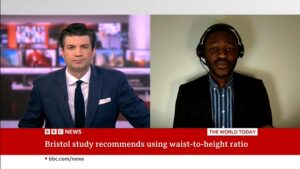
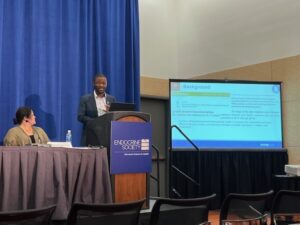
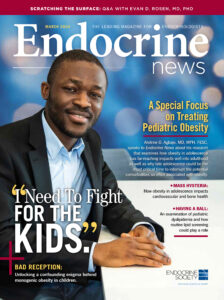
US News, World and Report 04.06.24
ENDO 2024 Press Conference 01.06.24
Endocrine Society ENDO 2024 Congress Press Release
European Congress on Obesity 2024 EASO pre-conference interview 11.05.2024
BBC World News LIVE TV interview 14.03.2024
European Association for the Study of Obesity interview 9th March 2024
Yahoo Canada news_ 6th March 2024
The SUN UK news_6th March 2024
Endocrine Society, US, Podcast
University of Eastern Finland video
University of Eastern Finland award news
University of Eastern Finland podcast
European Society of Cardiology News
American Physiological Society News
University of Bristol, UK News
Talouselämä Finnish News: 09.06.24
Savon Sanomat Finnish News: 03.06.2024
Savon Sanomat Finnish News 07.05.2024
Helsingin Sanomat Finnish News: 10:04.2024
Helsingin Sanomat Finnish News: 14:03.2024
Publications
39 items-
A 7-year longitudinal association of total cholesterol with premature structural and functional cardiac damage progression in youth: the ALSPAC birth cohort study
Agbaje, Andrew O, 2023, European heart journal. Abstract -
Adolescents cholesterol passport: a universal pediatric lipid screening tool to combat atherosclerosis—the world's deadliest scourge
Agbaje, Andrew O, 2023, Frontiers in pediatrics, 11, 1228483. B1 Non-refereed journal articles -
An average of 60mins/day of moderate to vigorous physical activity from childhood through young adulthood was associated with worsening cardiac structural damage in youth: A 13-year longitudinal study
Agbaje, Andrew O, 2023, European heart journal. Abstract -
Arterial Stiffness Preceding Metabolic Syndrome in 3862 Adolescents: A Mediation and Temporal Causal Longitudinal Birth Cohort Study
Agbaje, Andrew O, 2023, American journal of physiology : heart and circulatory physiology, 324, 6, H905-H911. A1 Journal article (refereed), original research -
Arterial stiffness but not carotid intima-media thickness progression precedes premature structural and functional cardiac damage in youth: A 7-year temporal and mediation longitudinal study
Agbaje, Andrew O; Zachariah, Justin P; Tuomainen, Tomi-Pekka, 2023, Atherosclerosis, 380, 117197. A1 Journal article (refereed), original research -
Associations of accelerometer‐based sedentary time, light physical activity and moderate‐to‐vigorous physical activity with resting cardiac structure and function in adolescents according to sex, fat mass, lean mass, BMI, and hypertensive status
Agbaje, Andrew O, 2023, Scandinavian journal of medicine and science in sports, 33, 8, 1399-1411. A1 Journal article (refereed), original research -
Cardiorespiratory Fitness in Adolescence: A Telescope into Future Cardiovascular Health
Agbaje, Andrew O, 2023, European journal of preventive cardiology, 30, 5, 404-406. B1 Non-refereed journal articles -
Cumulative accelerometer-based light physical activity from childhood through young adulthood progressively decreases left ventricular mass in British youth: a 13-year longitudinal study
Agbaje, Andrew O, 2023, European heart journal. Abstract -
Cumulative accelerometer-based light physical activity from childhood through young adulthood with arterial stiffness and carotid intima-media thickness progression: a 13-year longitudinal study
Agbaje, Andrew O; Barker, Anna; Lewandowski, Adam James; Leeson, Paul; Tuomainen, Tomi-Pekka, 2023, European heart journal. Abstract -
Cumulative accelerometer-based sedentary time from childhood through young adulthood with increased arterial stiffness and carotid intima-media thickness in youth: a 13-year longitudinal study
Agbaje, Andrew O; Barker, Anna; Lewandowski, Adam James; Leeson, Paul; Tuomainen, Tomi-Pekka, 2023, European heart journal. Abstract


